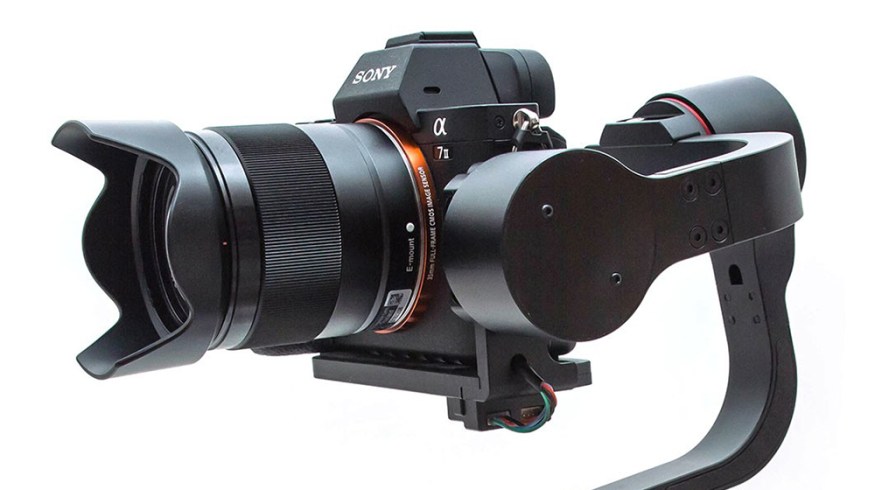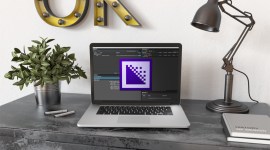
Affordable Gimbals for Light Cameras
3-axis gimbals are wildly versatile filmmaking tools, offering stable footage and the ability to create movements that would usually require extra gear.
While gimbals have certainly become more affordable, with more conservative options such as the DJI Ronin M, they are still fairly expensive for the average video enthusiast or blossoming professional. Over the past year, however, a plethora of affordable gimbals have been released.
While these were primarily limited to GoPros and built-in cameras, Filmpower changed this when they released their compact gimbal for light DSLRs and mirrorless cameras, the Nebula 4000, in January. The Nebula 4000 was the first to enter the sub-$1000 gimbal market, and while it was relatively well-received, it was still flawed.
Since then, two more distinct gimbal models have been released: the Pilotfly H1+ and the Came-TV Single. These two gimbals, while slightly more expensive than the Nebula, bring significantly more to the table in terms of features, practicality, and general product quality.
Let’s take a look into these two new gimbals, how they have improved upon the aging Nebula, and how they hold up against one another. Before we dive into that, here are the respective prices of each gimbal for reference:
- Nebula 4000 – 699.00 USD
- Pilotfly H1+ – 791.10 USD
- Came-TV Single – 988.00 USD
The Nebula 4000

The Nebula 4000 is an 8-bit gimbal that supports cameras up to 2.1 pounds and uses one sensor. Its frame is lightweight, simple, and small, making it very portable and great for small cameras that don’t necessarily need something larger. We won’t go too much into the details of the Nebula, but if it interests you, you can learn more about it in our overview from January.
Beyond these fundamental features found in the Nebula 4000, the Pilotfly H1+ and Came-TV Single have a number of important differences. They tend to provide nearly identical footage in terms of stability, but they really stand apart in terms of ease of use and more situationally-specific features.
The New Kids Gimbles on the Block
The Pilotfly H1+ and Came-TV Single both push compact gimbal technology much further. To start, they both include dual sensors as opposed to one, which improve accuracy and responsiveness. In addition, both gimbals are 32-bit, providing additional processing power and more precise tuning.
They also feature larger frames and larger motors, allowing for larger and slightly heavier camera bodies. This obviously comes with the disadvantage of holding bulkier, heavier equipment, but in the end you can choose which direction to go depending on how large and heavy your camera is.
Lastly, while customer service isn’t an improvement in terms of performance, it is important. Filmpower (The creator of the Nebula 4000) has a rather poor reputation in regards to their customer service, but luckily both Pilotfly and Came-TV have been commended for theirs. Lastly, the Pilotfly is only $100 more than the Nebula, which is a rather small price difference considering the many ways it outperforms the Nebula.
1. Pilotfly H1+

- Pros: Price, Customizable PID Profiles, PID Profile Presets, Low Profile Design, Light, No Exposed Cables, Supports Inverted Mode, Supports 2.6 pounds, Control Via Bluetooth
- Cons: Balance Requires PID Tuning, App Only Available on Android, No Encoders, Case Off, Single Axis Joystick, 2 Hour Battery Life, Non-Removable Battery, Requires Hex Tool (included)
Let’s begin with the cheaper of the two options. Pilotfly’s H1+ stands out the most in its customization and versatility. You can adjust and fine-tune your PID (Proportional, Integral, Derivative) settings to your heart’s content.
PID settings adjust the three motors to achieve the best balance for a particular camera and lens combination. Pilotfly has provided a plethora of common camera and lens presets to allow a quick-and-easy setup for your specific camera. These can be adjusted using a Mac, PC, or an Android smart phone.

Using the Android app also allows you to control your gimbal orientation wirelessly via bluetooth. Bear in mind the Android app is rather hard to find information on, and is actually called SimpleBGC. An app has not yet been released for iPhone users, but hopefully that will change in the future.
The H1+ supports Inverted Mode as well, which allows you to hold the device upside down for convenience or extra low shots. The Came-TV Single does not support inverted mode, and limits you to holding it in the traditional vertical way.
The physical design of this gimbal is notable too. Unlike with the Came-TV Single, there are no loose wires to fear, and the device is generally much smoother and less bulky than the Single. Its low-profile build is a bit more appealing, as it makes the device more compact and less flashy. The H1+ reportedly supports up to 2.6 pounds as well, making it the strongest of these gimbals.
2. Came-TV Single

- Pros: Fast Setup, Encoders, Auto-orientation, Up to 10 Hour Battery Life, 18650 Batteries, Quick Release Plate, No Tools Required, Larger Camera Support, Heavy Duty Case
- Cons: Price, No Inverted Mode, Bulky Design, No PID Customization, Exposed Cables, Heavy, Supports 2.2 Pounds
Now let’s look at the Came-TV Single. The general consensus seems to be that the Single is the better of these two gimbals – but is it justifiable at nearly $200 more than the Pilotfly? Well, that really depends on how important its unique features are to you.
The Came-TV certainly brings gimbal technology the furthest within $1000 (though just barely), mostly through its use of encoders. Encoders are a common component in robotics that provide a number of benefits to motor performance. Among these are less de-sync and skips, less power consumption, increased precision, and more motor torque. Encoders are part of what make the Came-TV wonderfully simple to set up.
The biggest selling point of the Single is its charming simplicity. The Single requires no in-software calibration, and will balance itself almost instantly. Thanks to its encoders, you can actually reset the orientation of your camera by simply physically forcing the camera to a new orientation for a few seconds, at which point the gimbal will automatically adjust.
Came-TV also improved upon Pilotfly’s design by implementing a 2-axis joystick instead of a 1-axis one.
This allows simultaneous pitch and yaw adjustments without having to toggle between the two. Pilotfly’s Android app alleviates this by allowing the same functionality, but again, requires further set-up before shooting.
While this gimbal is great for quick setups, unfortunately Came-TV has also prevented users from customizing PID settings on their own. They insist that it is unnecessary, but unfortunately in the event that you want to make minor adjustments to your calibration, you will be unable to do so with the Single.
While the Single is rather bulky and rugged in comparison to the H1+, this comes with its advantages. For one, its frame is larger than that of the H1+, allowing it to support larger cameras. Its built-in quick release plate is a nice addition as well. The H1+ and Nebula both require the use of a hex tool for balancing, whereas the Single has removed this hassle and instead replaced it with simple screws that require little fine-tuning.
The larger nature of the device warrants the nice, heavy-duty hard case that it includes, compared to the adequate soft bag that comes with the H1+.

Lastly, the Single excels in its battery type and life. The Pilotfly H1+ will run for a respectable two hours or so, but it is dwarfed by the 9-10 hour battery life of the Came-TV Single.
Additionally, the Came-TV runs on generic 18650 batteries, which are both cheap and easy to acquire. Pilotfly uses a proprietary, non-removable battery, limiting usage to just a couple of hours at a time. Pilotfly does offer an external battery, but this is still disappointing when compared to the stellar efficiency of the Single.
Conclusion
In conclusion, both the Pilotfly H1+ and Came-TV Single are blessings to the video production community, offering very impressive, cinematic footage with little effort.
If you don’t mind going the extra financial mile to save time down the road, the Came-TV Single is the way to go. However, if you like having maximum control (especially wireless) over your equipment, can’t live without inverted mode, or just want something a bit easier to carry, you’ll want to go with the Pilotfly H1+.
Regarding the Nebula 4000, it’s still a great tool, but it’s best for those whose foremost concern is either budget or size, considering how outdated the technology is quickly becoming. Check out these awesome video reviews of these gimbals as well!
Do you have experience using any of the gimbals on this list? Share your experience in the comments below.






